Calcium Deficiency In Cannabis Plants
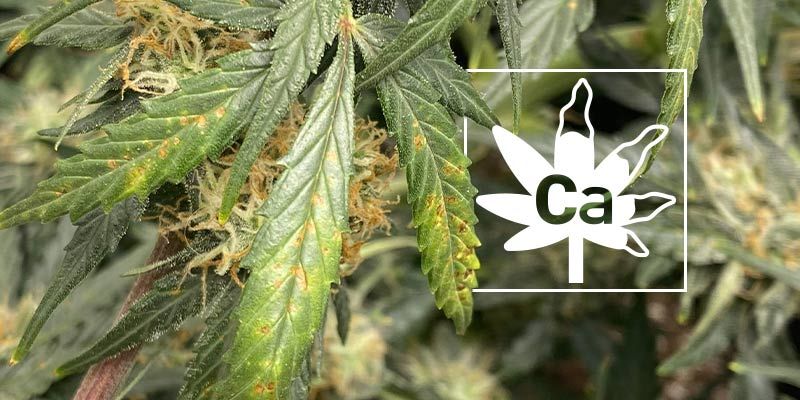
Calcium has long been considered a secondary nutrient or micronutrient, but many growers now consider it to be a core macronutrient. Calcium plays a key role in the healthy formation of cell walls and plant tissues, but it also helps with nutrient transport, supports enzymatic activity, and is important for soil health. A lack of calcium leads to calcium deficiency in cannabis plants, which we'll teach you to diagnose, prevent, and treat in this article.
What causes calcium deficiency in marijuana plants?
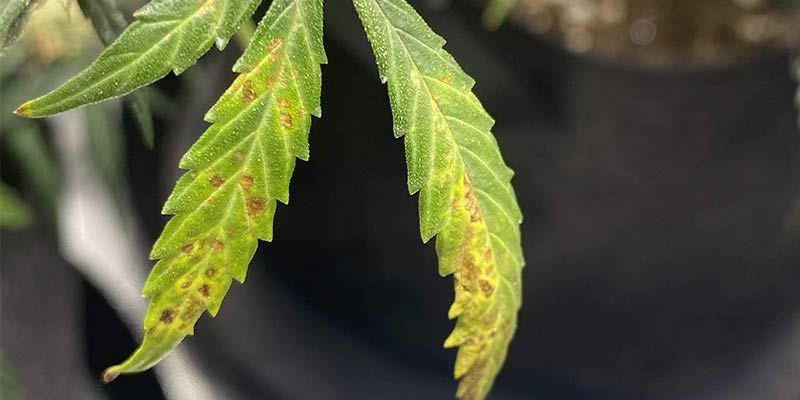
A number of issues can give rise to a cannabis calcium deficiency, including:
- Low pH: Calcium deficiency is more common in acidic or sandy soils, as calcium is less available at lower pH levels (unlike other nutrients such as nitrogen, iron, manganese, and copper). Low pH is one of the most common causes of calcium deficiencies and often affects hydro or coco growers, who tend to grow at slightly lower pH levels than soil growers.
- High salt content: Calcium deficiency is also more prominent in saline soils, as salty soil conditions affect the movement of calcium molecules.
- Excess phosphorus: High amounts of phosphorus can affect the solubility of calcium. Soils rich in phosphorus (or the overuse of phosphorus-rich bloom fertilisers) can render calcium in the soil unusable.
- Filtered water: Reverse osmosis and filtered water also typically contain less calcium than regular tap water or rainwater. Therefore, using reverse osmosis water may cause calcium deficiencies in some cases.
How to recognise a cannabis calcium deficiency
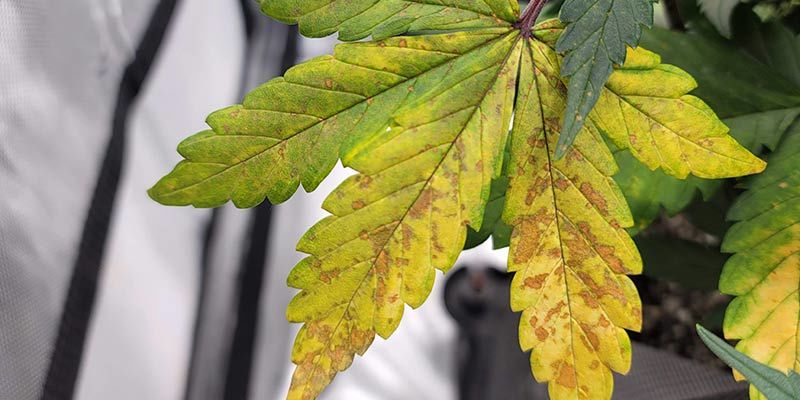
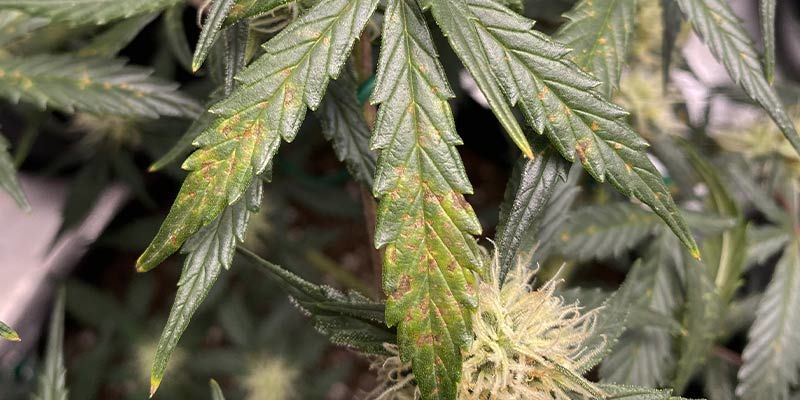
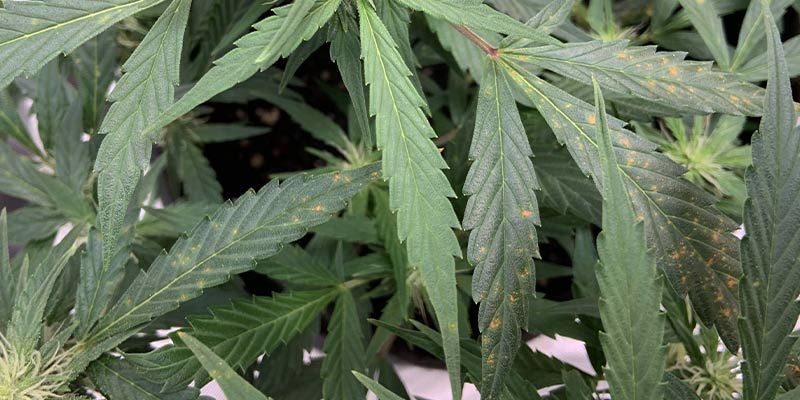
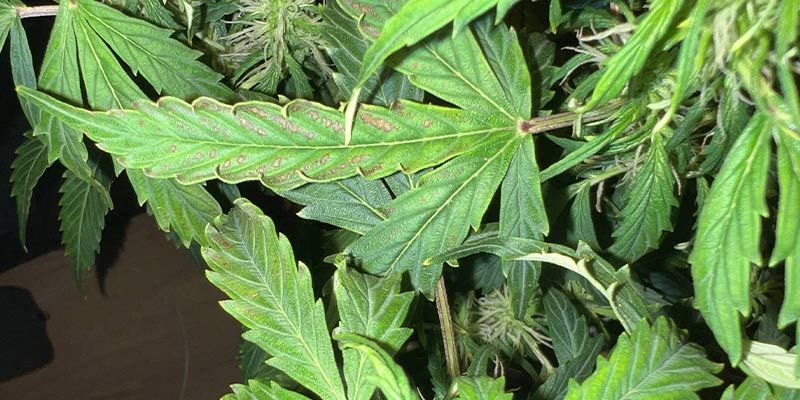
As is often the case with nutrient deficiencies, distinguishing a calcium deficiency can be tricky. First of all, every cannabis plant may respond slightly differently to a deficiency, so it can take a trained eye to clearly diagnose a lack of calcium. Second, calcium deficiencies can also produce symptoms that are similar to those of other nutrient deficiencies.
To identify a calcium deficiency in your cannabis garden, look for:
- Brown or rust-coloured spots on leaves, particularly new foliage near the tops of plants
- Yellowing young leaves
- Lack of vitality—e.g. weak branches and stunted growth
- Mottled leaves
How to prevent calcium deficiency in cannabis
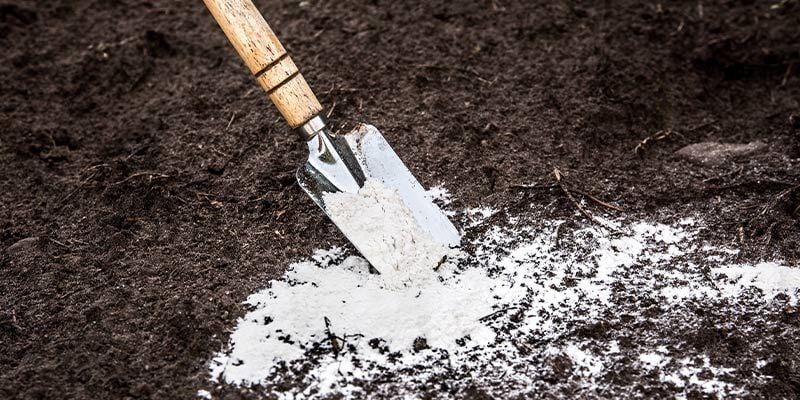
As with all nutrient deficiencies, a solid defence is your best offence against a calcium deficiency, as the time it takes to correct a nutrient problem inevitably inflicts stress on your cannabis plants, affecting their growth and final yields. Some of the best ways to prevent a calcium deficiency include:
- Make sure you're feeding your plants calcium: The first step in preventing a calcium deficiency is to ensure that you're actively giving your plants enough of the nutrient. You can do this by adding natural calcium-rich fertiliser to your soil before planting or, of course, through the use of fertilisers during your grow. If using liquid synthetic fertiliser, be careful not to overfeed your plants—cannabis calcium toxicity is just as bad as a deficiency.
- Closely monitor pH: pH issues are the top cause of nutrient problems because pH directly affects the availability of plant nutrients. To make sure your plants can access the calcium in your soil or fertiliser, keep your pH at 6.2–7. This is very important for soilless or hydroponic growers in particular.
- Create and maintain a healthy root zone: The health of your plants' roots is vital to their growth, and ultimately the size and quality of the yield they'll produce. Maintaining a healthy root zone is one of the best ways to protect your plants from pests, pathogens, and even nutrient deficiencies. Some ways to create a healthy root zone include:
- Starting with the right growing medium: Our super soil recipe contains a variety of natural ingredients that benefit the growth of your plants from their first day of life right through to harvest day.
- Using organic fertilisers: Unlike synthetic fertilisers, organic fertilisers contain much more than just the nutrients your plants need. They also create a breeding ground for healthy bacteria and fungi that promote healthy roots.
- Following a good feeding and watering routine: Over/underfeeding and watering are some of the biggest problems cannabis growers face. Not only do both of these problems stress cannabis plants, but they also affect the root zone and soil health in ways that can take time to rectify.
Progress of calcium deficiency
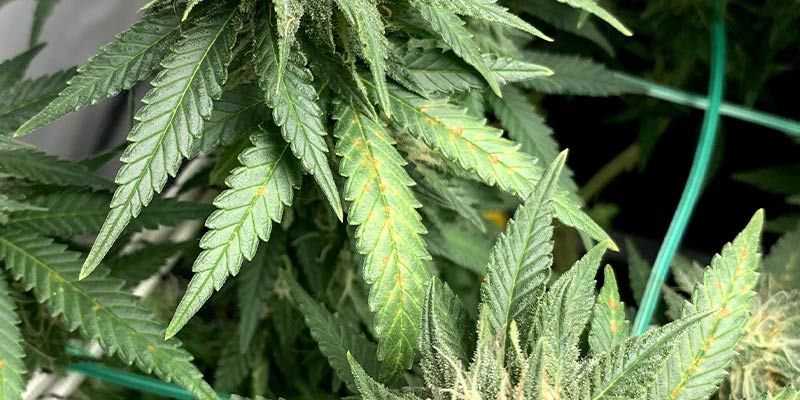
Calcium stores are used to build strong cell structures and walls, so you may see the symptoms of a calcium deficiency start off in the branches/stems of leaves before affecting other parts of the plant. Since calcium is an immobile plant nutrient (meaning plants cannot move it around inside of their organism freely), calcium deficiencies typically affect newer growth first.
What calcium deficiency looks like in cannabis plants
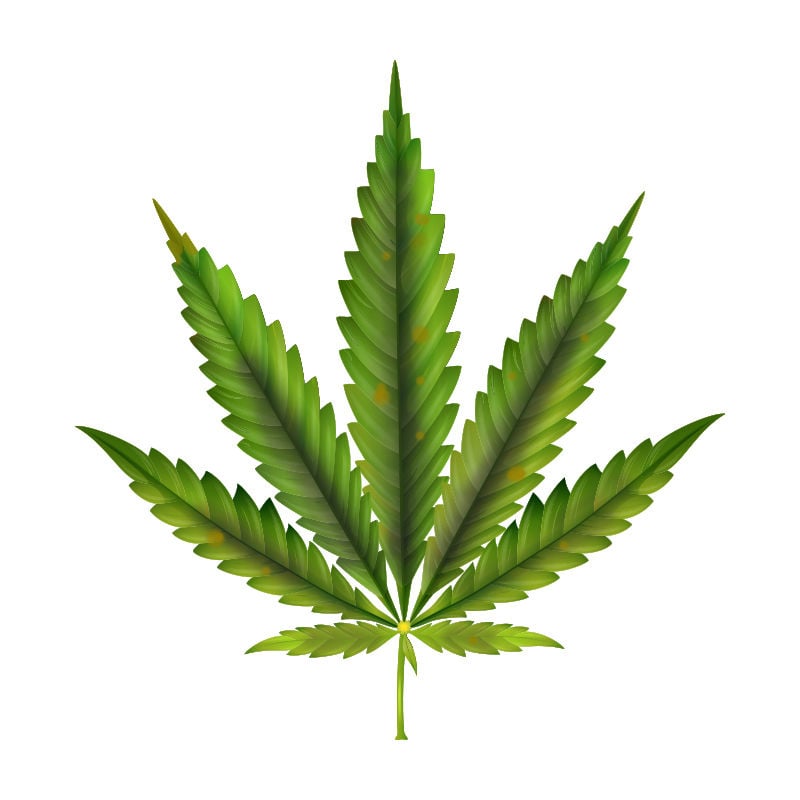
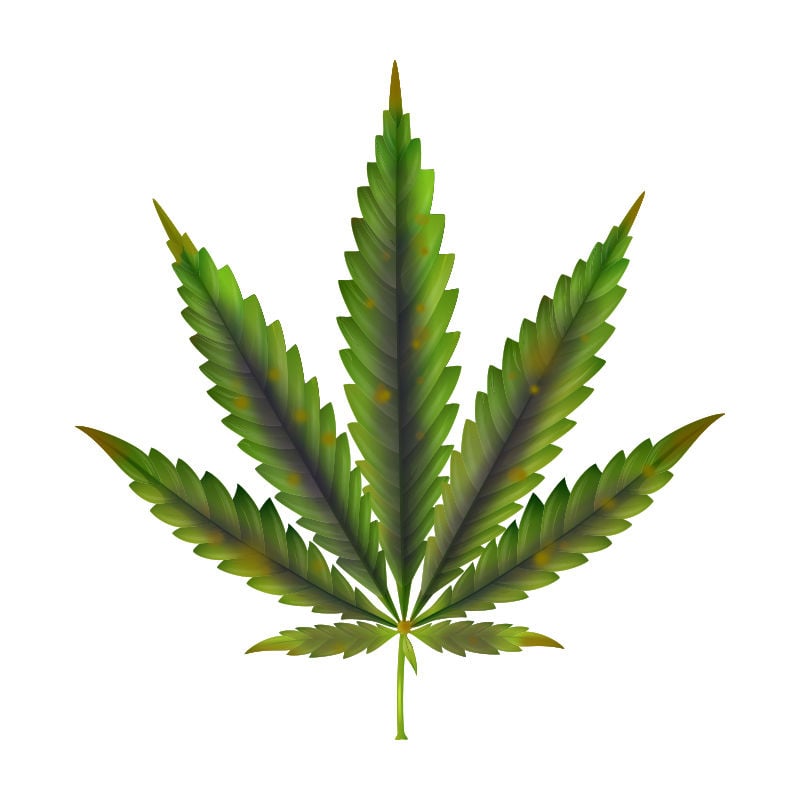
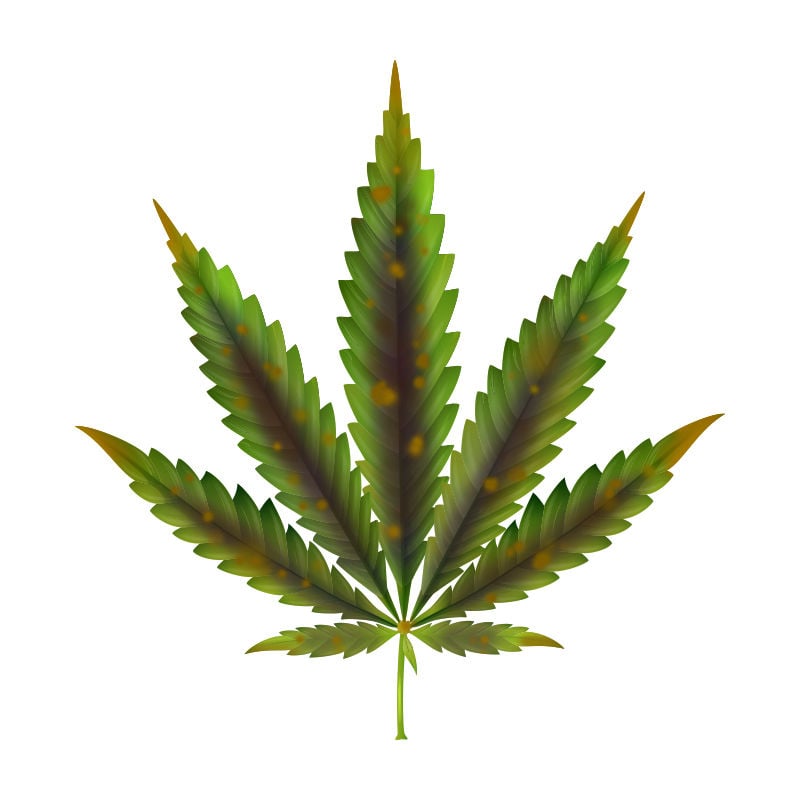
To further help you diagnose calcium deficiency, use the pictures we've gathered below of calcium-deficient cannabis plants at different stages.
How to treat calcium deficiency in cannabis
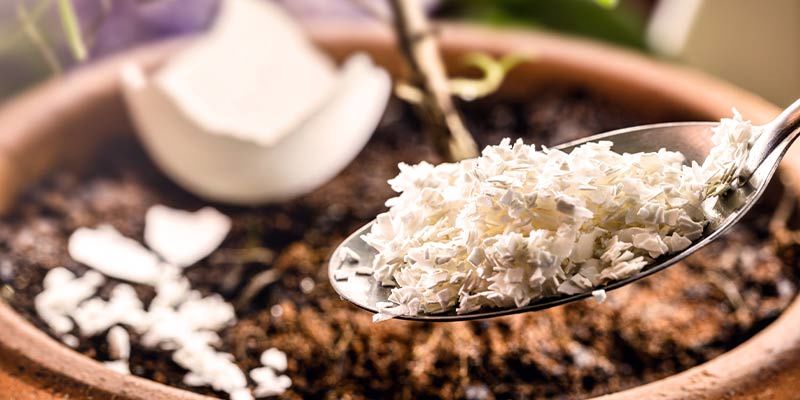
The best way to address a calcium deficiency is to first identify the root cause of the problem. In most cases, this will either be an underlying pH issue or a lack of calcium in your medium or fertiliser.
If pH issues are the cause of calcium deficiency in your plants, you'll want to address this first, as any extra calcium you try to feed your plants won't be readily available to them. Hence, measure the pH of your water, soil, and nutrient solutions, and adjust them back to the ideal range of 6.2–7.
Once you've regulated the pH, use calcium supplements such as calcium acetate or calcium magnesium acetate to slowly introduce more calcium to the root zone, taking care not to overdo it. Also, consider using a calcium-rich foliar spray to introduce calcium directly to the leaves.
Good natural sources of calcium include:
- Fish bones
- Crushed eggshells
- Dolomite lime
Is a calcium deficiency really that bad?
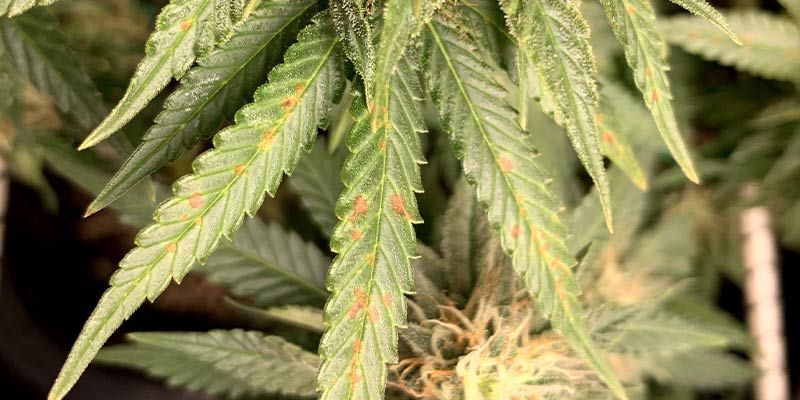
Calcium is a crucial nutrient, and cannabis plants use a lot of it, particularly during the peak flowering stage (which is also when calcium deficiencies are most common). A lack of calcium can severely affect flower development and, if left unaddressed, can dramatically impact the size and quality of the buds you harvest.
Calcium: Crucial to big buds
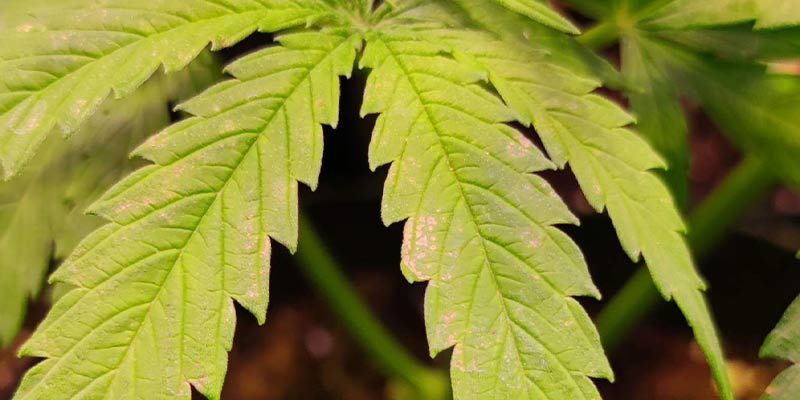
Some sources might still categorise calcium as a micronutrient, but don't let that fool you; calcium is absolutely vital to the health of your cannabis plants. To avoid running into a calcium deficiency during your next grow, start your plants off in a high-quality medium and take a proactive approach to ensure they're always getting the nutrients they need.












 United States
United States








